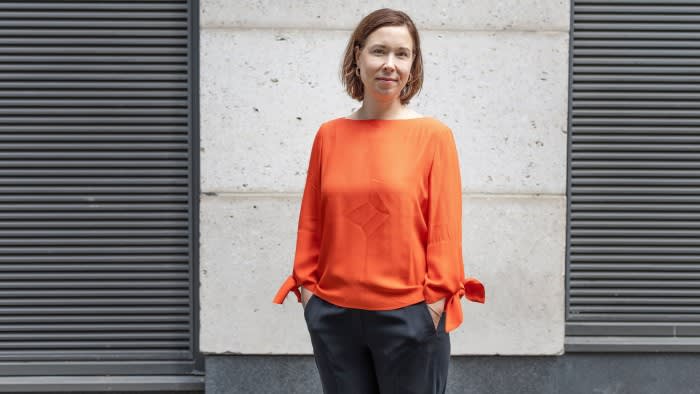Unlock the Editor’s Digest for free
Roula Khalaf, Editor of the FT, selects her favourite stories in this weekly newsletter.
The executive in charge of ensuring United Airlines reaches its environmental goals has said sustainable aviation fuel will be economically viable only if there is co-operation with the oil industry.
In an interview with the Financial Times, Lauren Riley, chief sustainability officer for the US’s third-largest airline, said that one of the big problems for sustainable jet fuel providers was a lack of infrastructure.
“They don’t have access to the pipelines,” she said. “They don’t have the traditional logistics support.
“We’re going to need access to pipelines. Oil companies are a critical part of the solution,” she added.
Most sustainable aviation fuel (SAF) is made from recycled cooking oil, although it can also be made from other sources such as household waste. It currently costs at least twice as much per gallon as traditional jet fuel.
United Airlines has a target of making its operations net zero for carbon emissions by 2050. But only 0.1 per cent of the fuel it uses a year is sustainable and Riley said there was only a “handful” of producers, among them Finland’s Neste and California-based World Energy.
Customers would like to be able to move on from having to transport SAF by barge, which is relatively more expensive and less efficient, Riley said. Traditional aviation fuel in the US moves through infrastructure built to serve oil and gas companies, such as the huge Colonial Pipeline network on the east coast.
SAF manufacturers also face challenges securing the investment and other support they need to expand production towards the levels the aviation industry requires. Riley pointed out that worldwide production of SAF last year was 150mn gallons (570mn litres), while United alone used 4.2bn gallons (16bn litres) of conventional jet fuel.
“We have to see the market scale up much faster,” Riley said.
However, she expressed confidence that new technology would allow sustainable jet fuel to be made from a wider range of sources. She is optimistic about the potential of “power to liquid” fuels, also known as e-fuels, which are produced by using electricity to extract hydrogen from water and carbon from the air to create a synthetic hydrocarbon.
“We’re beginning to see a lot of those innovations come to market,” she said.
E-fuels, however, are even more expensive than other SAFs and production is so far at very low levels. “The question on that one is: can we scale it?” Riley said of e-fuels.
She accepted that the biggest risk for United Airlines’ efforts to decarbonise was the relatively short time left to transform its technology before 2050. “I think the biggest risk today is the timeline,” she said.
However, she insisted that it would be possible to reach the next zero carbon goal in the available time. “Personally, I believe we’ll do it,” she said. “The level of innovation I’ve seen so far is just incredible.”


